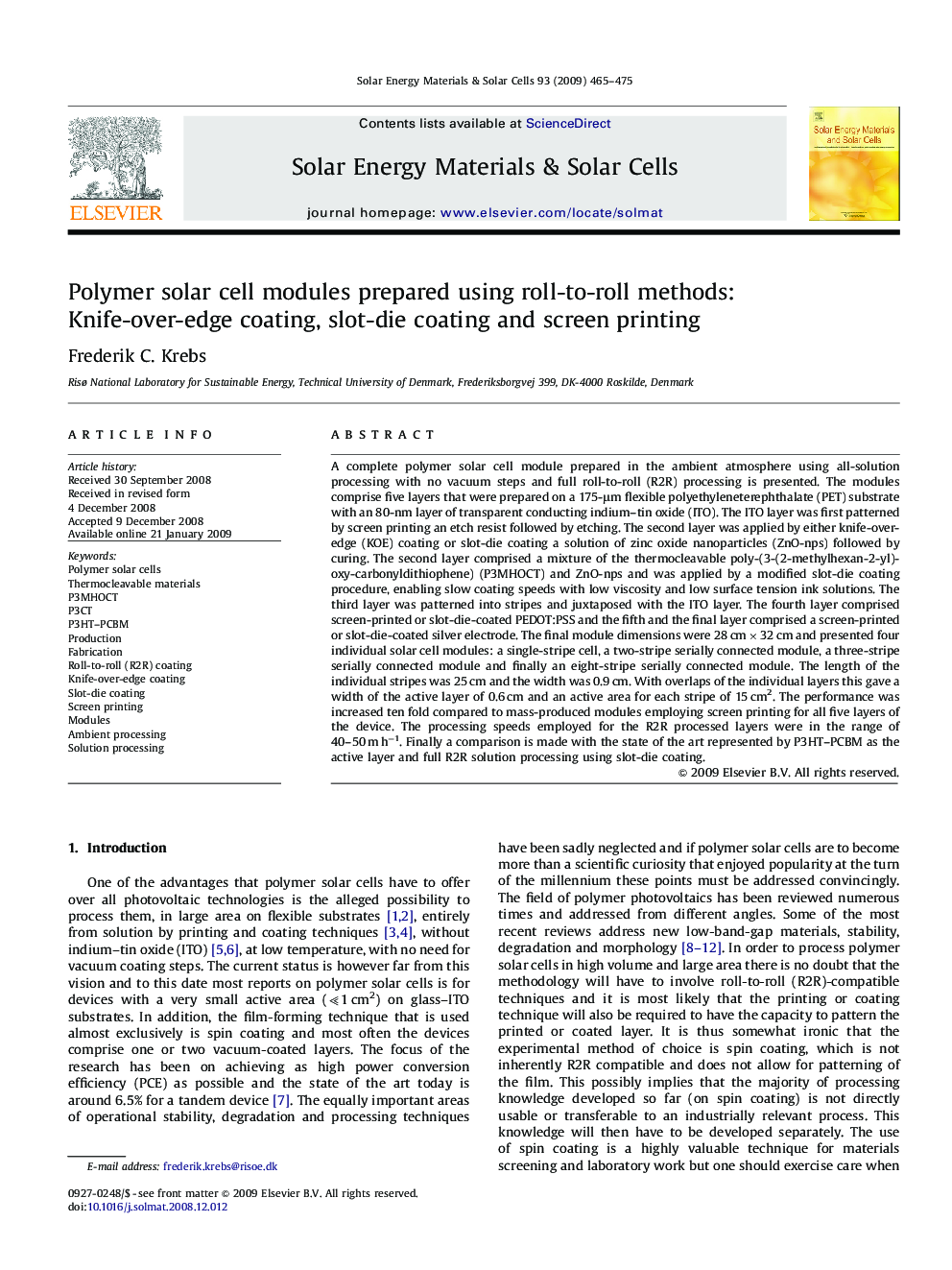| کد مقاله | کد نشریه | سال انتشار | مقاله انگلیسی | نسخه تمام متن |
|---|---|---|---|---|
| 80036 | 49371 | 2009 | 11 صفحه PDF | دانلود رایگان |

A complete polymer solar cell module prepared in the ambient atmosphere using all-solution processing with no vacuum steps and full roll-to-roll (R2R) processing is presented. The modules comprise five layers that were prepared on a 175-μm flexible polyethyleneterephthalate (PET) substrate with an 80-nm layer of transparent conducting indium–tin oxide (ITO). The ITO layer was first patterned by screen printing an etch resist followed by etching. The second layer was applied by either knife-over-edge (KOE) coating or slot-die coating a solution of zinc oxide nanoparticles (ZnO-nps) followed by curing. The second layer comprised a mixture of the thermocleavable poly-(3-(2-methylhexan-2-yl)-oxy-carbonyldithiophene) (P3MHOCT) and ZnO-nps and was applied by a modified slot-die coating procedure, enabling slow coating speeds with low viscosity and low surface tension ink solutions. The third layer was patterned into stripes and juxtaposed with the ITO layer. The fourth layer comprised screen-printed or slot-die-coated PEDOT:PSS and the fifth and the final layer comprised a screen-printed or slot-die-coated silver electrode. The final module dimensions were 28 cm×32 cm and presented four individual solar cell modules: a single-stripe cell, a two-stripe serially connected module, a three-stripe serially connected module and finally an eight-stripe serially connected module. The length of the individual stripes was 25 cm and the width was 0.9 cm. With overlaps of the individual layers this gave a width of the active layer of 0.6 cm and an active area for each stripe of 15 cm2. The performance was increased ten fold compared to mass-produced modules employing screen printing for all five layers of the device. The processing speeds employed for the R2R processed layers were in the range of 40–50 m h−1. Finally a comparison is made with the state of the art represented by P3HT–PCBM as the active layer and full R2R solution processing using slot-die coating.
Journal: Solar Energy Materials and Solar Cells - Volume 93, Issue 4, April 2009, Pages 465–475